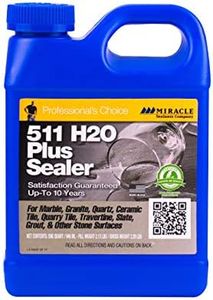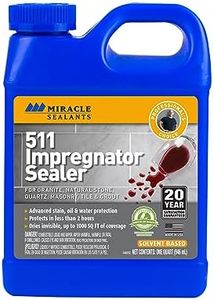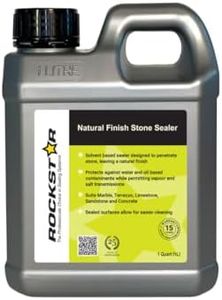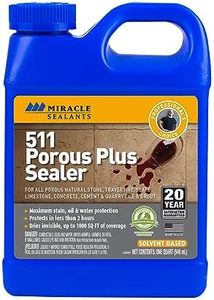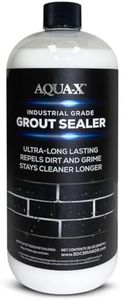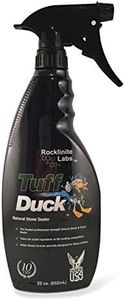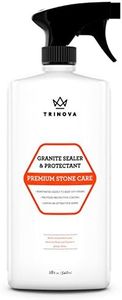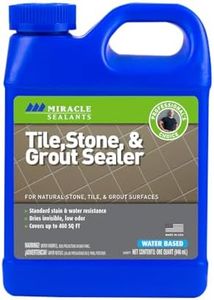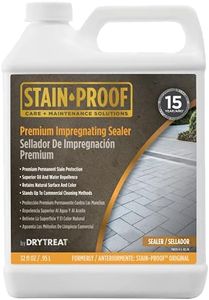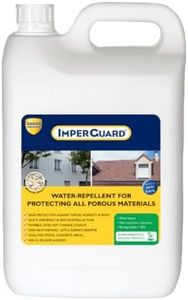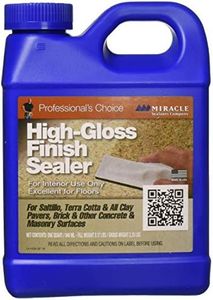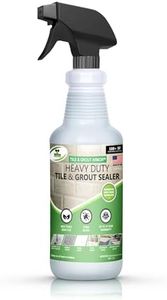We Use CookiesWe use cookies to enhance the security, performance,
functionality and for analytical and promotional activities. By continuing to browse this site you
are agreeing to our privacy policy
10 Best Tile Sealers
From leading brands and best sellers available on the web.Buying Guide for the Best Tile Sealers
Choosing the right tile sealer is an important step in ensuring the long-term beauty, durability, and cleanliness of tile installations. Tile sealers protect tiles and grout from stains, water damage, and wear, helping to keep surfaces looking fresh and new for years. When shopping for a tile sealer, it's important to understand what type of tile you have, where it is located (indoors or outdoors), and what you want from the sealer (such as a glossy finish or a more natural appearance). By focusing on your specific needs and understanding the key specifications, you can select a sealer that offers optimal protection and appearance for your tiles.Type of SealerTile sealers come in different types such as penetrating (impregnating) sealers and surface (topical) sealers. Penetrating sealers absorb into the surface to provide protection without changing the appearance of the tile, making them ideal for areas that need to resist moisture and stains, like bathrooms or kitchens. Surface sealers leave a protective layer on top and can offer a sheen or gloss, enhancing color and making tiles easier to clean, but might wear faster in high-traffic areas. To choose, consider if you want to maintain the tile’s natural look, or if an enhanced, shiny finish is preferable, as well as the location and expected wear.
Suitability for Tile MaterialDifferent tiles—such as ceramic, porcelain, natural stone, or quarry—require different sealers, as some materials are more porous than others. Natural stones like marble or slate are highly porous and need strong protection, while glazed ceramic tiles may not need sealing at all and might only require grout sealer. Always check that the product matches your tile type, as an improper sealer can result in poor protection, discoloration, or altered finish. Use your tile material as a primary guide to narrow your options.
Finish (Gloss Level)Sealers can affect the appearance of tile by adding a glossy, satin, matte, or natural finish. A glossy finish can make colors “pop” and create a shiny, reflective look, which is popular in decorative spaces but may highlight dirt and scratches. A matte or natural finish keeps the original tile appearance and hides imperfections better. Pick a finish by considering the look you desire for your space and the practicalities of cleaning and maintenance—higher gloss needs more upkeep but offers a striking look, while matte is lower maintenance and more subtle.
Water and Stain ResistanceOne of the main purposes of sealing is to protect tiles and grout from water and stains. Different sealers offer varying levels of resistance; some are specialized for water-heavy environments (like showers), while others are primarily for stain protection (like in kitchens). High resistance sealers are best for bathrooms, outdoor areas, or any setting exposed to moisture, while moderate protection may suffice for low-moisture areas. Think about where your tile is located and what kinds of spills or moisture it will likely encounter when judging how strong a sealer you need.
Longevity and ReapplicationSealers differ in how long they last before requiring a reapplication—some last only 1-2 years, while others can protect for several years. High-traffic areas, outdoor spaces, or locations frequently exposed to water will need more frequent resealing. If you prefer lower maintenance, look for a long-lasting formula. Always consider how much work you’re willing to invest in upkeep, and match the longevity of the sealer to the traffic and use conditions in your space.
Ease of ApplicationSome sealers are easier to apply than others; they may come in spray bottles, require sponges or brushes, and have different drying or curing times. Quick-drying and easy-application sealers are great for beginners or for sealing smaller areas, while professional-grade types may require more experience and tools. When choosing, think about your confidence with DIY tasks, the size of your tiling area, and how quickly you want to finish the sealing job. Simpler application is generally best for most home users.
